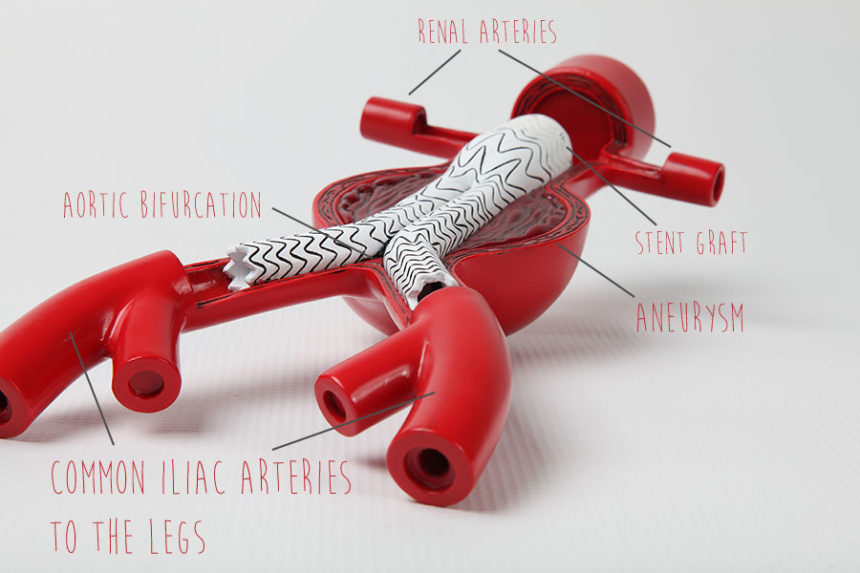What do Albert Einstein, Lucille Ball, George C. Scott, and John Ritter have in common? They all died from aortic disease.
Einstein and Scott suffered from abdominal aortic aneurysms while Ritter and Ball experienced aortic dissections, or a tear in the inner wall of their aortas. More than 15,000 people a year die from ruptured aneurysms, with the incidence of aortic aneurysms tripling in the United States in the past 30 years, attributed to an aging population. Abdominal aortic aneurysms are the third leading cause of sudden death in men over age 60.
Aneurysms are often called a “silent killer,” because patients often have no symptoms until the aneurysm bursts. Nearly 75 percent of all patients with a ruptured aneurysm die from the condition, which makes screening crucial for people at greatest risk.
What are aneurysms?
Aneurysms are a ballooning and weakening of the arterial wall and occur in almost any artery in the body. If an aneurysm grows large enough it may lead to rupture, internal bleeding, shock and even death.
Common types of aneurysms
Aortic aneurysms occur in the aorta, which delivers blood throughout the body from the heart to organs. Thoracic aneurysms occur in the section of the aorta located in the chest, while abdominal aneurysms can occur in any section of the abdomen, including the intestines and kidneys.
Aortic Dissection
An aortic dissection begins when a tear forms in the innermost lining of the aortic wall. When the tear occurs, blood leaks into the aortic wall, causing separation of its layers. This leads to intense pressure in the aortic wall and a high risk of rupture. Aortic dissections may also limit the flow to several important organs including the heart, brain, liver, kidneys, intestines, spinal cord and legs. Aortic dissection is a life-threatening emergency and is frequently fatal.
Aortic Screening
Early detection of aortic disease is proven to save lives. Preventative screening in high-risk patient populations and treatment of individuals with aneurysms have saved thousands of lives each year.
Each year approximately 200,000 people in the U.S. are diagnosed with abdominal aortic aneurysms. Because many do not experience symptoms, it’s estimated that more than one million people are living with an undiagnosed abdominal aortic aneurysm. Fortunately, at least 95 percent of these aneurysms can be successfully treated if detected prior to rupture.
Finding and treating an aortic aneurysm before the aneurysm ruptures is vital for patient survival.
Source: AAAneurysm Outreach
Get screened
Contact UNC Aortic Disease Management at 919-843-2867, aorticnurse@unch.unc.edu or online at uncheartandvascular.org to find out about aortic disease screenings.

